The Enveloping Darkness of John Singer Sargent’s Prints and Drawings
Rare examples of John Singer Sargent's printmaking are on temporary view at the Metropolitan Museum of Art, demonstrating his interest in the expressive shapes of the human body and lithography's potential to show these figures in darkness and light.
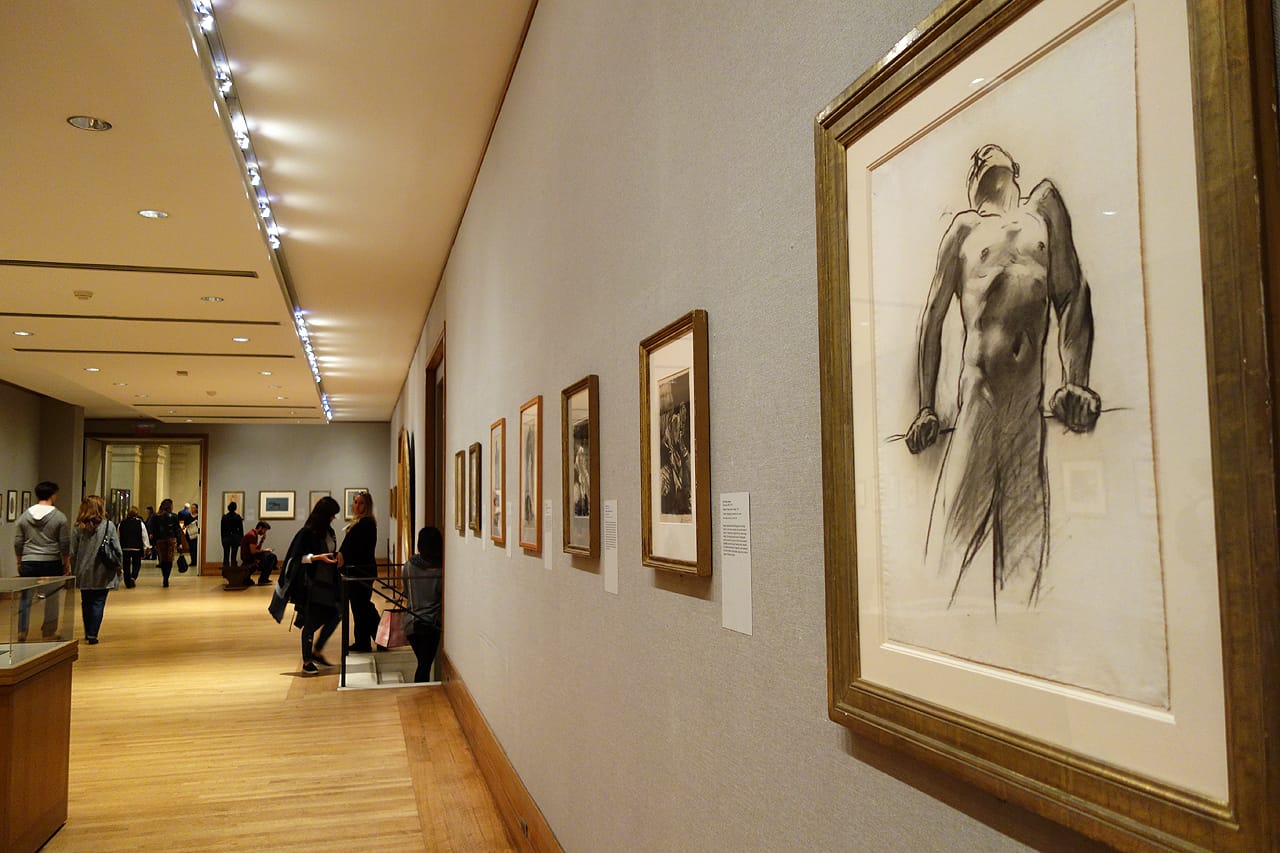
Rare examples of John Singer Sargent’s printmaking are on temporary view at the Metropolitan Museum of Art, demonstrating his interest in the expressive shapes of the human body and lithography’s potential to show these figures in darkness and light. The lithographs were donated by his sister Violet Ormond in 1950, but like the other works in the museum’s rotating Drawings and Prints: Selections from the Permanent Collection exhibition in the Robert Wood Johnson, Jr. Gallery, they are not on permanent view due to their light sensitivity.
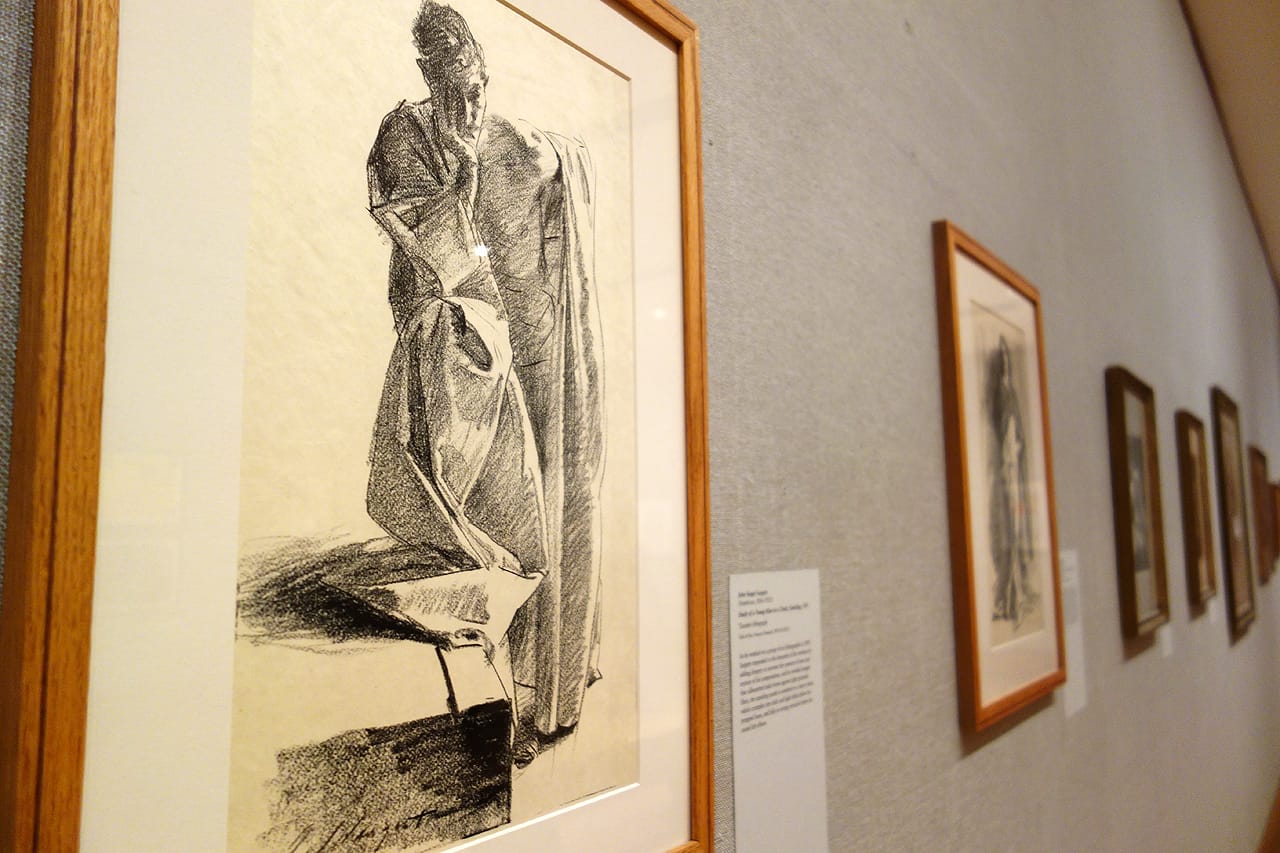
Sargent made the series of six lithographs in 1895, even asking his valet Nicola d’Inverno to model for a couple of intense standing portraits, his body framed by a flowing cloak. The lithographs were a change from Sargent’s painting, created in preparation for an exhibition commemorating the centennial of lithography’s invention by Alois Senefelder. Constance C. McPhee, curator in the Department of Drawings and Prints, writes in a post for the Now at the Met blog:
Galerie Rapp organized a section of the exhibition devoted to contemporary artistic prints and asked the British printer Frederick Goulding to help find participants based in London. Artistic lithography had flourished earlier in the nineteenth century, during the days of Daumier, but then largely became the domain of commercial printers. Around 1890, however, new transfer papers sparked renewed artistic interest. Goulding himself invented such a paper and volunteered to supply London artists, Sargent included, with the necessary materials, and then to print their work.
The installation of the prints, which are accompanied by some Sargent figure drawings, coincided with the museum’s recent exhibition Sargent: Portraits of Artists and Friends. That show similarly highlighted art that is often missing from the narrative of Sargent’s work, with unfinished, small-scale canvases that, while not as extreme in experimentation as other late 19th- to early 20th-century painters, demonstrate his subtle variations in technique and portraiture.
Seeing the lithographs together, some joined by their original preparatory drawings, shows a gradual evolution of the sensual male figure surrounded by sculptural draping into something more shadowy and intense. Sargent eventually chose “Study of a Young Man, Seated” to be included in the lithography exhibition at the Palais de Beaux-Arts in Paris, where a man leans forward from a couch, the tones and texture of the lithograph offering an almost theatrical shading, as if the darkness is a pall encroaching on his body.

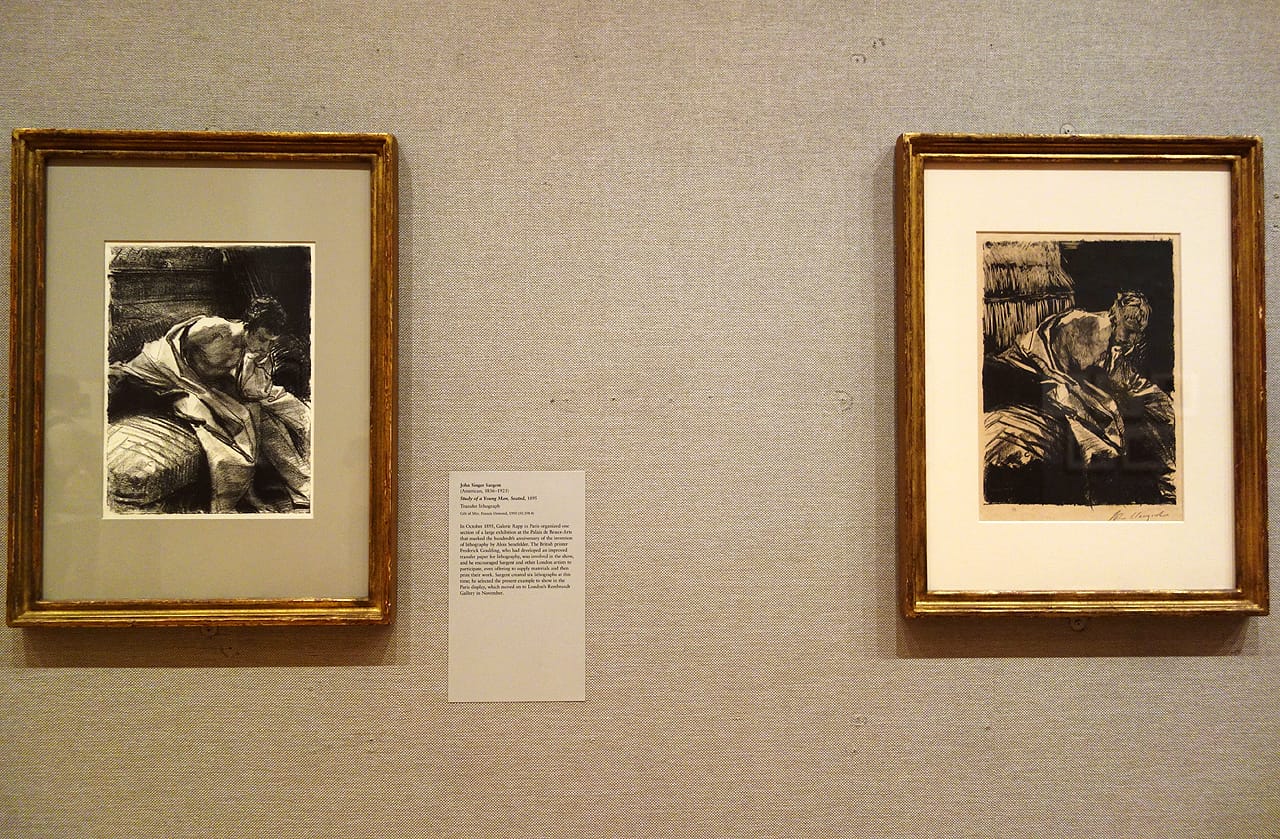

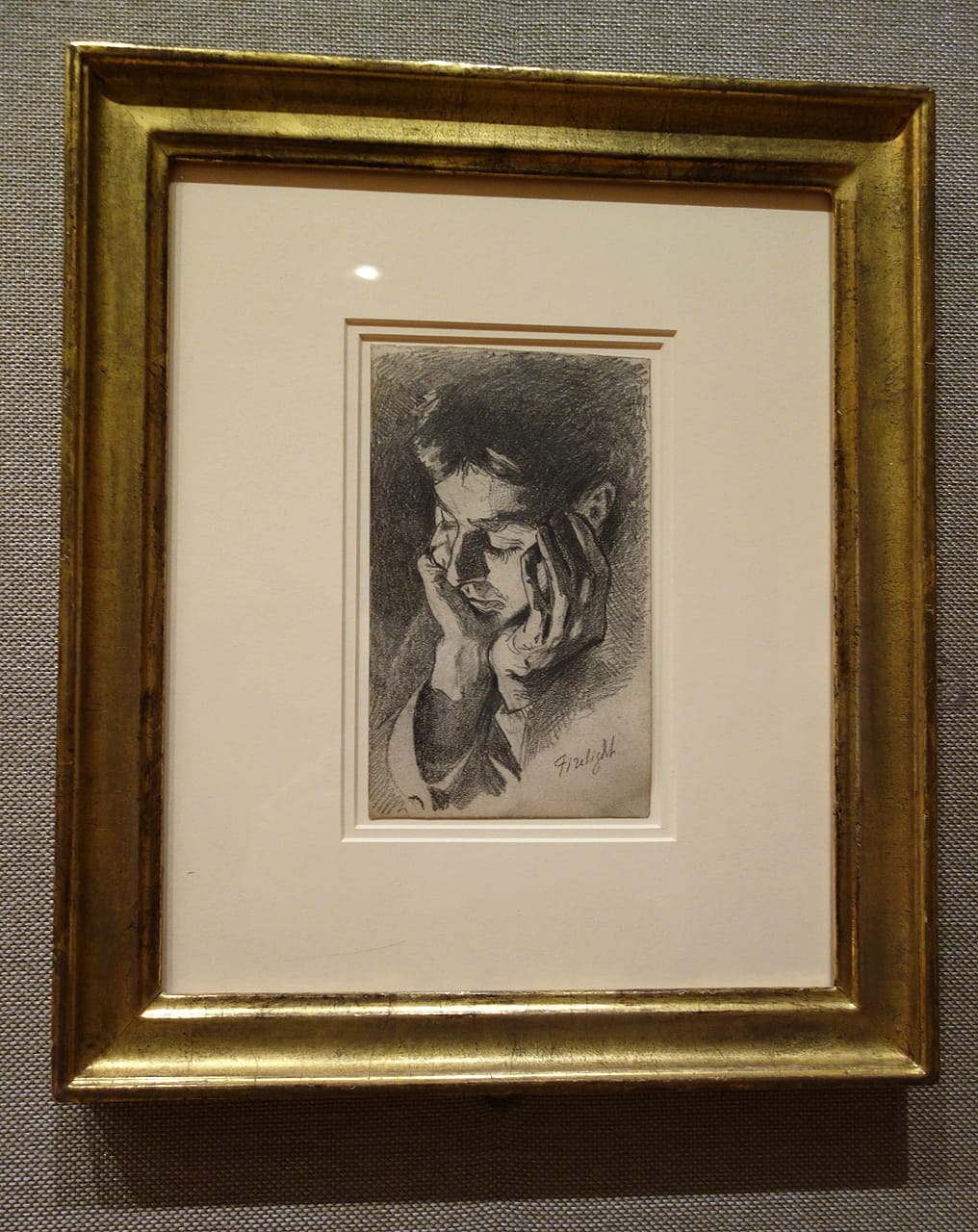

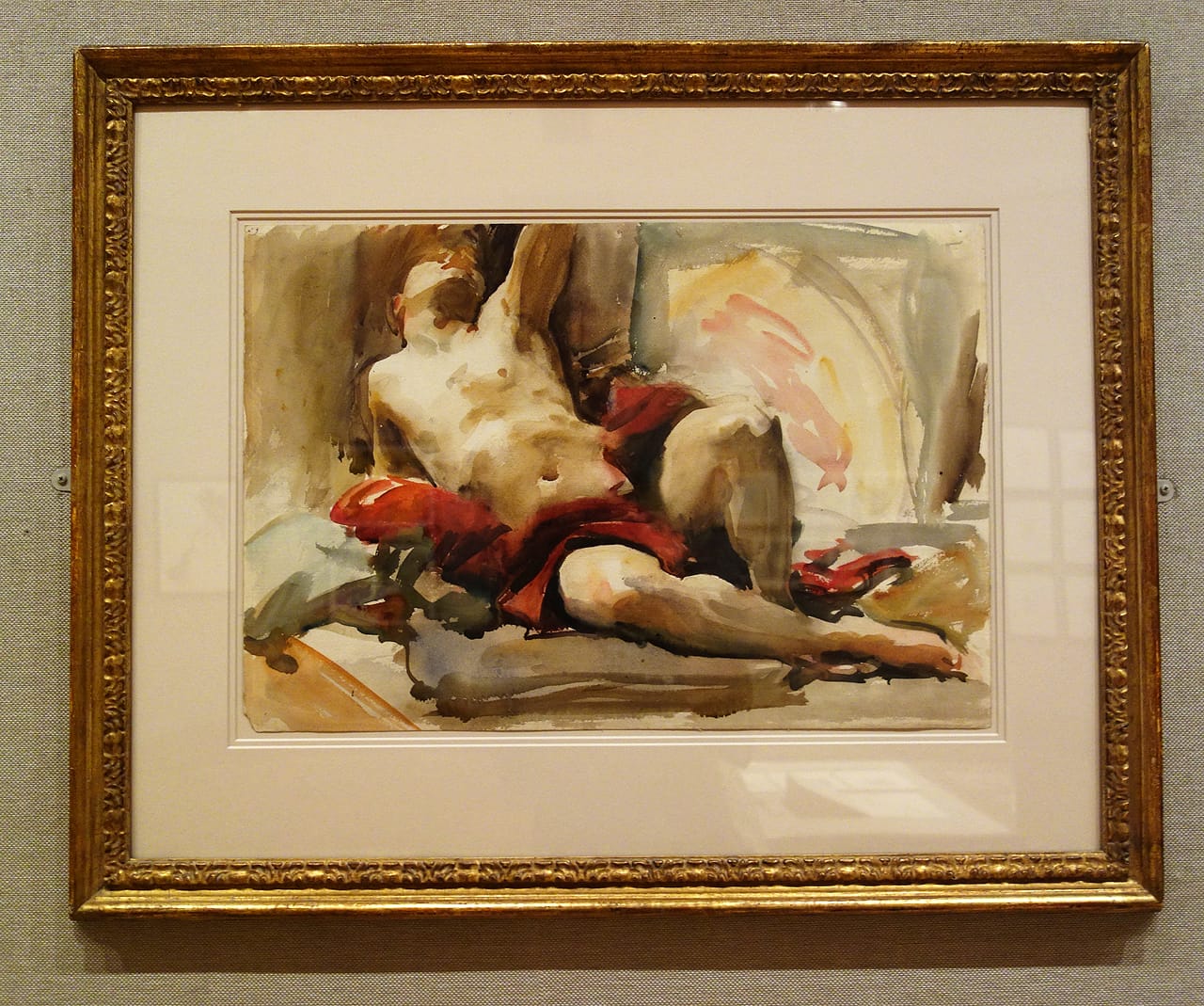

John Singer Sargent’s drawings and lithographs are on view in Drawings and Prints: Selections from the Permanent Collection at the Metropolitan Museum of Art (1000 Fifth Avenue, Upper East Side, Manhattan) through January 7, 2016.





